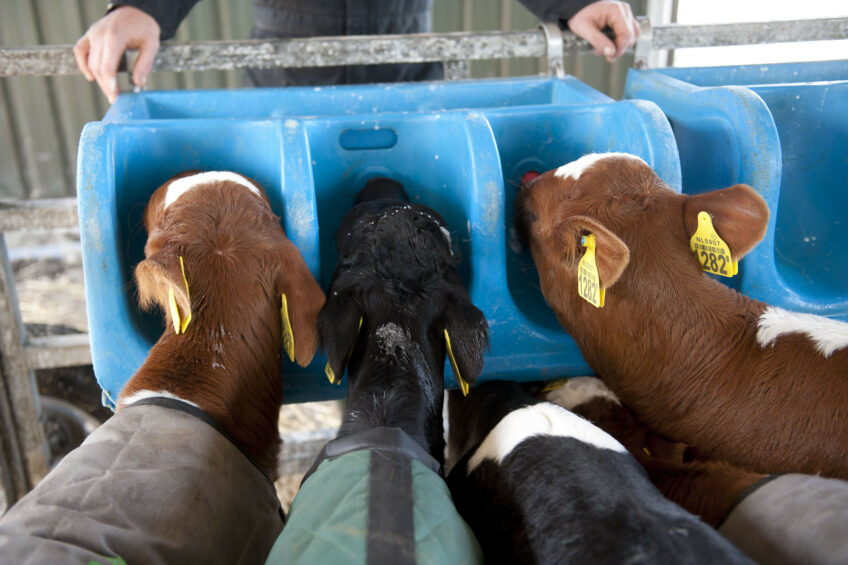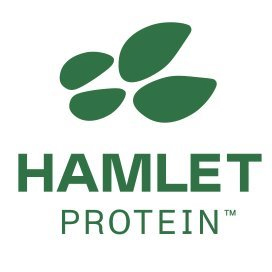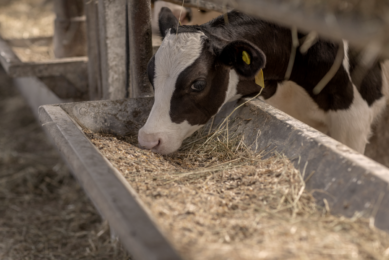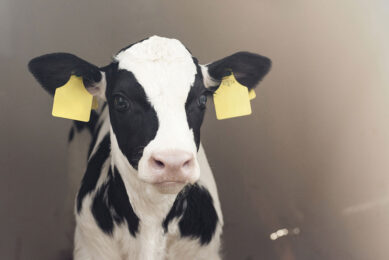No weaning dip with the right pre-starter

Calf producers face a major hurdle when introducing milk-fed calves to their first solid feed diet, due to the calf’s immature state of the gastrointestinal (GI) system. This can lead to a weaning dip. By choosing the right pre-starter feed, producers can either reduce or avoid the risks.
Calf guts undergo a dramatic development in the first 8 to 10 weeks of life, naturally initiated by solid feed intake as the animals move from a milk-only diet. It is during this period that the transition to ruminant begins. It’s also when a weaning dip is often the inevitable outcome of an unstable and insufficient energy supply from the rumen. For farmers, a weaning dip brings direct economic consequences in the form of a longer fattening period for rearing calves with higher feed expenses. When it comes to dairy heifers, science has demonstrated a link between a higher rate of pre-weaned growth and a lower breeding age with higher milk yield at the first lactation.

The problem with immature guts
The immaturity of the GI system is the reason why a calf’s transition to ruminant can be troublesome. From birth, calves have an esophageal groove, a muscular structure that shunts milk directly into the abomasum, by-passing the rumen. What this means is that new-born calves are functional monogastrics in terms of their ability to break down feed and absorb nutrients. Because the secretion of digestive enzymes is highly limited, new-born calves need an easily digestible feed. This is not a problem in the first few days after birth, when calves’ nutritional requirements are first met by colostrum from the dam and then by whole milk or milk replacer. But, with the introduction of solid feed, the challenges arise.
Twin-purpose pre-starter
Pre-starter feed should be introduced during the first week of life. The purpose of this is 2-fold:
- to initiate the development of the rumen,
- to motivate calves to increase their solid feed intake in preparation for weaning.
During this period, when milk is reduced and solid feed takes over the supply of energy and nutrients, it’s important that calves absorb the right amount of energy and nutrients to maintain their average daily weight gain without a weaning dip. Although calves start to ruminate at the age of 5 to 8 days, they are not considered ruminants until the age of 6 to 8 weeks. During this time, the rumen microbiota is not yet able to make sufficient nutrients available for absorption – the reason why calves depend on monogastric-style nutrient absorption for their daily growth. So, what can be done to overcome this digestive issue during this transition period? The answer lies in the choice of pre-starter feed – and, particularly, a protein source – with a low content of anti-nutritional factors (ANFs) and allergens. But, first, let’s take a closer look at the problems that a standard vegetable protein can cause.

Protein components with a negative impact
Soy is the most commonly used protein source in calf pre-starters. However, when soy protein is in its untreated form, the content of ANF and allergens is high. While not a problem for calves with a developed rumen, in younger animals ANF and allergens have a strong negative impact on protein absorption and the developing rumen. By extension, this means these substances compromise the calves’ potential for healthy growth and development. Soy antigens glycinin and -conglycinin comprise the greatest part of the protein in the raw soybean. As they are not destroyed during conventional toasting, these antigens are still present in conventional soybean meal. Several trials have shown that calves do not tolerate high concentrations of ß-conglycinin and develop antibodies against them. This results in damage to the villi in the small intestine and a shorter feed transition time. Protein digestibility and nutrient uptake are reduced – and so is calf weight gain. The trypsin inhibitors in soy pose another challenge to protein digestibility by forming complex bindings to the protein-splitting digestible enzymes, trypsin and chymotrypsin. This is a further limiting factor in the new-born calf gut, where enzyme secretion is already low. A domino effect of poor protein digestibility is that the relatively high level of non-digested protein will serve as substrate for pathogenic bacteria – increasing the risk of diarrhoea.
A speciality solution for a smooth gut transition
A processing technique developed by Hamlet Protein has made it possible to reduce the ANF and allergens in soy protein to a minimum. Through the use of enzymes, the technique also improves the bioavailability of essential minerals, such as phosphor, zinc and copper. This is the technology behind HP RumenStart, the company’s latest speciality soy protein for calf pre-starter feed. The major benefit of HP RumenStart is that it supports the calf’s transition to ruminant. In doing so, it helps overcome the shortcomings of immature GI systems during the critical weaning period. Calves have better access to the energy and nutrients they need for continued daily growth; and producers are less likely to suffer the economic consequences of the weaning dip. Or, to put it another way: healthy animals make a healthy profit. One important lesson of calf feeding trials over the years is that success is not only about what you put into pre-starter feed. It’s also about what you leave out – in this case, the ANF that stand in the way of nutrient uptake.
Author: Christine Brøkner, R&D Manager, Product Development and Trial Excellence, PhD at Hamlet Protein




